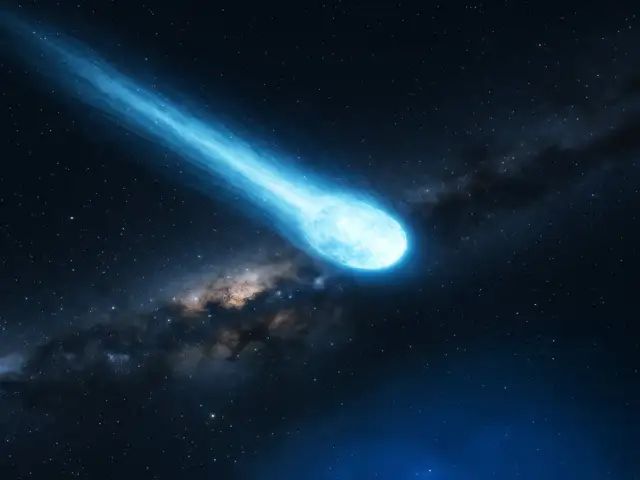Dhurandhar: Real-Life Inspirations Behind Ranveer Singh and Co. in the Film
Is Interstellar Comet 3I/ATLAS an Alien Ship? NASA Clarifies
New Delhi | Nov 20
Interstellar comet 3I/ATLAS has set off a wave of excitement and wild speculation ever since it was discovered on July 1, 2025. The comet, observed by NASA along with several international space agencies, is estimated to be between 5 and 8 billion years old—making it far older than Earth. This detail was highlighted by US Congressman George Whitesides from the House Science Committee, who also stressed that there is absolutely no evidence to support the viral online claims suggesting the comet might be an alien craft sneaking through our Solar System. According to him, it is simply a natural visitor from deep space, not a disguised spaceship on a secret mission.
The discovery has triggered a massive scientific campaign across the Solar System. NASA has deployed twelve different assets—ranging from spacecraft to some of its most powerful telescopes—to track and study 3I/ATLAS as it moves through the inner Solar System. The Hubble Telescope captured remarkable images, while spacecraft scattered across different orbital paths joined in to observe the comet from multiple perspectives.
One of the most fascinating moments came when 3I/ATLAS passed close to Mars, at a distance of about 19 million miles. NASA’s Mars Reconnaissance Orbiter managed to take some of the clearest images yet, and the MAVEN orbiter collected ultraviolet data to help scientists understand the comet’s chemical makeup. Even the Perseverance rover, stationed on the Martian surface, caught a faint glimpse of the interstellar traveller.
NASA’s Psyche and Lucy missions—both en route to study asteroids in distant parts of the Solar System—also captured observations of the comet as it crossed their paths. Meanwhile, on Earth, India’s Mount Abu Observatory operated by ISRO recorded additional images, giving researchers even more angles to study.
The wide range of viewpoints is helping scientists compare 3I/ATLAS with comets that originate in our own Solar System. This may reveal what distant planetary systems were made of billions of years ago, offering a rare peek into cosmic history far beyond our neighborhood.
Congressman Whitesides also raised an important point about interstellar objects entering our region of space. He noted that if an object the size of 3I/ATLAS were ever found heading directly toward Earth, humanity might have only about two months to prepare a plan to deflect it—an unsettling but realistic reminder of the challenges such objects pose.
3I/ATLAS is moving so fast that the Sun’s gravity cannot trap it. Its hyperbolic path proves it came from another star system, just like the two earlier interstellar visitors—‘Oumuamua in 2017 and 2I/Borisov in 2019. That makes it only the third known interstellar object ever seen passing through our Solar System.
As 3I/ATLAS continues its journey into the void, NASA and global observatories are still watching closely. Every bit of data collected helps scientists understand not just this ancient wanderer, but the distant and mysterious systems it once called home.
Is Interstellar Comet 3I/ATLAS an Alien Ship? NASA Clarifies
Interstellar comet 3I/ATLAS has become the centre of attention ever since it was discovered, with many people online wondering if it might be an alien spacecraft. NASA has now made it clear that there is no sign of anything artificial about it. Scientists say the comet is simply an extremely old visitor from another star system, likely between 5 and 8 billion years old, making it even older than Earth.
NASA and several space missions around the Solar System have been tracking the comet from different angles. Spacecraft near Mars, telescopes orbiting Earth, and even rovers on the Martian surface have observed it as it passed through the inner Solar System. These views are helping scientists understand what distant planetary systems might have been like billions of years ago.
The comet recently passed fairly close to Mars, giving NASA’s orbiters a chance to capture detailed images and study its composition. Missions such as Psyche and Lucy, travelling through deep space, also managed to observe it along their routes. Experts say that studying such rare interstellar visitors can help piece together the early history of the universe.














Add Comment